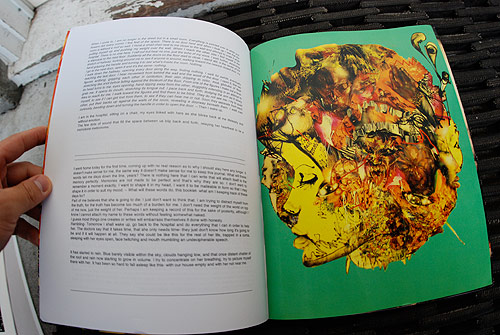
Photographs from unknown photographers have lined the walls of museums, been sold off at fine-art auctions for thousands and can be found collecting dust / old sunlight in alleys behind houses or in between the pages of a used book.
The appeal of a found-photograph is virtually universal- it appeals to the mysterious parts of our psyche, the voyeuristic and the imaginative. The snapshot aesthetic popularized by MoMA director of photography John Szarkowski and photographers Eggleston, Parr, Freidlander, Arbus and Winogrand in the mid-sixties relates immediately to these images for they are themselves “snapshots.” The main difference being that with found images, an artist’s name is stripped from the work- there is no resume / reputation for the image to fall on.
These images, then, are just that – images – taken by anonymous persons from the dawn of photography to its current state.
The first found-photograph I came across was in the pages of an Edna St. Vincent Millay book that I’d found in the street in San Francisco. The image was of a woman’s face staring directly into the camera of a photo-booth. Long an admirer of Millay, I soon found myself associating her work with this face- a photograph I imagine a woman or man used as a placeholder or bookmark. I remember inventing stories for that image, sifting through junk at several stores in order to find more images, more photographs.
Recently, whilst sifting through the detritus of a junk shop, I came across a photo-album several inches thick which chronicled in images the immigration of several generations of a family’s journey from Mexico into the United States. The pages begin in the ’40s, prints from the recently released “square-brownie” Kodak camera filling up the space in black and white; on other pages scattered collages of cyanotypes, photo-booth images caked in chemicals and small thin rectangular prints popularized at the time in the albumen process of different shades of brown and black. As each page is turned, the history not only of the family, but of photography is revealed casually, nonchalantly. The pages go from black and white to color- small square prints changing over the years to the now common 5 X 7 print taken on a point-and-shoot camera. Several scattered studio “star-shots” popular in the mid-nineties amongst adolescents and images printed on computer paper cut out and glued haphazardly occupy the last remaining pages of the album as an addendum- those images being the ones that have most deteriorated.
With digital photography proliferating rapidly- cameras miniature enough that they fit into pockets, cameras on phones and options obliterated / streamlined to the point where even a child can operate them- it makes one wonder what artifacts / documents will be left for one to find – if any – from this age or the future and in what form they will be.
The tangibility of a memory is what I used to characterize a photograph as. Now, it seems that the alleys of the future are those of the internet- abandoned web-sites or blogs that catalogue found images.
Here is a collection of the many-thousand photographs that I have acquired and accrued through my hoarding, collecting and archiving of strangers’ items.
- Jason Jaworski San Francisco, CA 2010

















